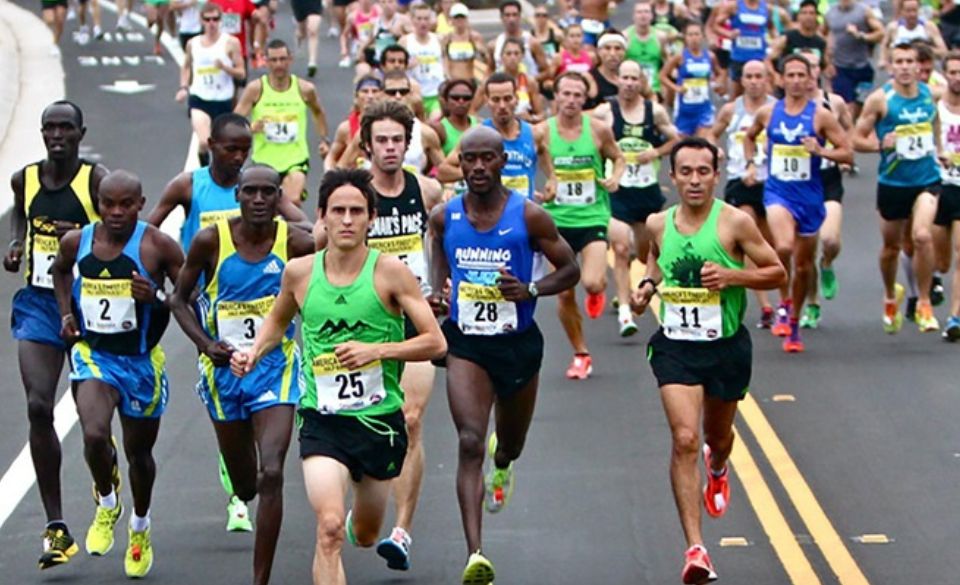
How to Prepare for a Marathon
Page Contents
Training for a marathon can be a difficult and challenging experience. It takes a great deal of willpower, perseverance, and a lot of work. There is no easy way to break into marathon training, but with a solid plan, you will see the results in time. You might think you’re asking for too much if you expect to train and prepare for a marathon without any previous marathon experience. But a person doesn’t need to have run a marathon before to successfully prepare for one. It’s like gambling in an online mobile casino – with some preparation and training, you can count on good results. And here are a few tips to help you get started on your journey to the finish line.
1 – Get Your Feet in Shape
For those who have been running consistently, the transition to running a marathon might seem easy. For others, a good plan is essential to get your feet in shape. In fact, running is one of the most effective ways to get in shape.
If you haven’t run a lot in the last couple of years, then start slowly. Run a short time at a fast pace, then slow down and recover. Increase your mileage slowly to build your endurance, rather than starting with long distances from the very beginning. Start with 1 mile per day, then go to 3, 5, and so on. If you want to really push yourself, increase your mileage to 20 miles per week.
You may wonder how much you should run per day or week. Whatever you choose, stick to it. Running more than is required each week will only result in burnout. So approach it wisely. If it is difficult for you to switch your focus from running to something else, there are many different interesting hobbies outside of sports that many athletes are up for. You can check them out and pick the one to your liking.
2 – Develop A Proper Nutrition Plan
Your body requires fuel for the long run. After a 10-mile run, your body will have used one-third of the glycogen stored in your muscles. It’s the time of the day when the body will look for more glycogen. The more often you feed your muscles, the more fuel they will have to work with for the rest of the run. But how to feed a runner in the right way?
The best time to feed is before a long run since it will cause your body to go into the process of glycogen synthesis. You’ll then find that the more glycogen you have, the better you’ll feel. Your body can store up to 2,000-3,000 calories at a time. That’s plenty to take care of a 5-10 mile run.
To help you stay on track, start out with a daily calorie intake of around 1,500 calories. Most people are able to take in 1,500 calories in one full meal. If you tend to overeat, then you might have to consume several smaller meals to get your caloric requirement covered. You might find you have to increase your intake of carbohydrates if your body needs more than you are storing. That’s perfectly fine. In fact, your body will appreciate the extra calories and help you reach your goals faster.
3 – Prepare For The “Blahs”
A marathon is a difficult race. The heat, the humidity, the crowds, the lack of sleep, and the long duration of time will all cause you to get tired and frustrated. But good preparation will ensure you finish stronger than ever before. The best way to prepare for a marathon is to train in the hottest part of the year. Run more days in the summer than in the winter. This will help you get acclimated to the heat.
Training in the summer and winter are different. Thus, in the summer, you should add more carbohydrates to your daily intake. Your body will store more calories in the heat causing you to feel tired and run slower. The additional carbohydrates will help you train and race harder. If you run in the winter, you’ll have to cut back on your caloric intake. Run slowly and reduce your speed. You can’t afford to burn any calories since you are trying to save energy for the race.
4 – Get Your Heart Healthy
Your heart needs to be ready for what’s to come. If you are prone to hypertension or if you have had a heart attack, you will have to slow your race down to ensure you’ll make it to the finish line. Hypertension is very common in marathon runners and has been reported in people who train more than three times a week. To prevent heart attacks and for people who already have a history of heart problems, you might have to reduce your training to once a week or less.
Even a small drop in blood pressure can put you at risk. If you suffer from diabetes, then you should be sure you are taking care of yourself before you take on a marathon. And even if you don’t have diabetes, it’s still a good idea to make sure you eat healthfully.
5 – Get Used To Running On Pavement
Running on pavement means running over the hot and sticky surface. But if you are used to running on grass only, you will be unprepared for the summer heat. If you have never run on pavement, then you’ll have to find the best surface for you. And it will depend on where you live. A good surface for those who live in areas that have cold winters is to run on dry concrete. Avoid doing this when it is raining, since it will slow you down and can be quite dangerous. For those living in a place where the weather is hot, the best surface for training is the hot asphalt. While you will be slower on this surface, you’ll be able to train more.
6 – Run Slowly At First
Once you have started your training, you should start to increase the amount of time you’re running. Gradually, you should run more miles per week. By increasing your mileage, you will see that your run times are getting faster. You’ll also notice that your breathing gets quicker and quicker. Don’t forget to train in places where you will actually run. You’ll have to put in the hours on the hills around you. You’ll also have to train in the heat to see if you’re prepared to do so. Don’t expect to feel ready to race when you haven’t run at all.
7 – Find Your Race Day Pace
Before you train for a marathon, you’ll want to know your race-day pace. To determine this, you’ll need to find the point where you start to feel like you can’t go any further. This is where you’ll know that you’ll be finished in the best time possible. When running such a test, don’t underestimate your body. There is a time when your body just feels ready to be done, and it’ll take a rest before you can go any further. Your body will give you a sense of this pace, whether you are actually running at it. When you notice it, take a time-out.
If you are an experienced runner, then you might want to consider breaking the distance up into smaller pieces. You might not be able to run 2 miles, but you could break that up into 1.25 miles, which will make the mission easier to accomplish. If you’ve never run before, then start with a short distance and build up to the marathon. This will give you time to rest, and time to learn to run in your training plan.


